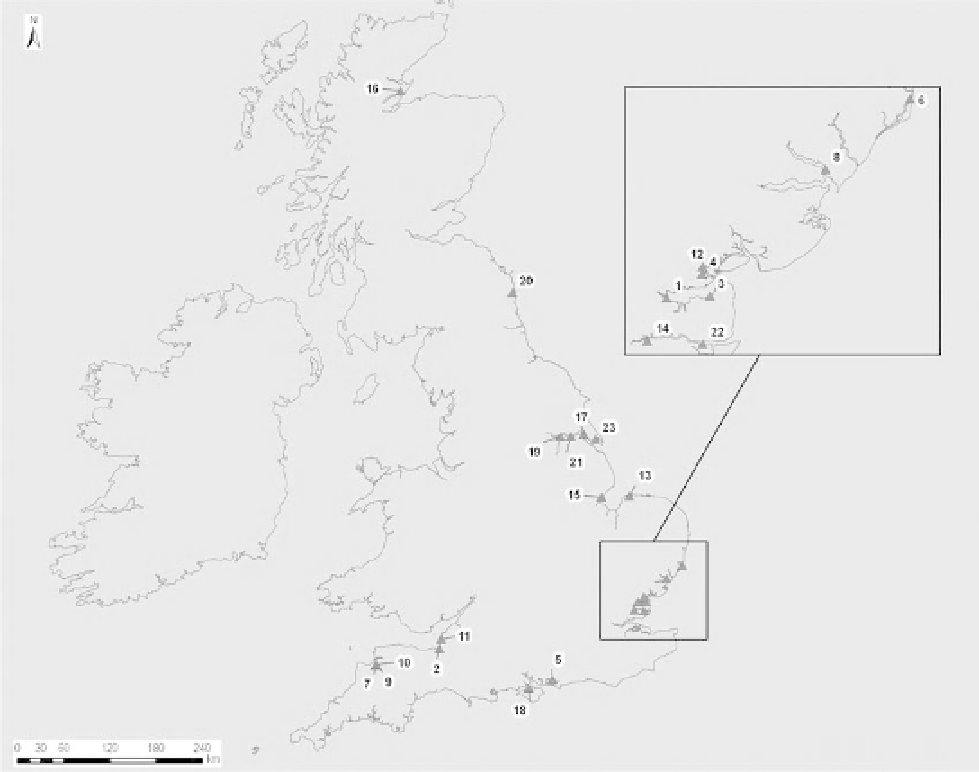Environmental Engineering Reference
In-Depth Information
Fig. 4.7
Location of recent UK managed realignment sites, as detailed in Table 4.5.
After breaching, and as part of the monitoring
work, it is strongly recommended that communi-
cation, which was vital before and during the
scheme's implementation, is continued after-
wards. This can be achieved through the circula-
tion of annual newsletters, discussion papers,
and details of specialist site visits. Furthermore,
on-site information boards help to inform the
public about why the wetlands have been created.
The dissemination of monitoring results and
the lessons learned from past schemes is also vital
in helping to improve future managed realign-
ments. This includes the circulation of findings
from individual projects as well as initiatives
such as the development of an online database of
managed realignments (Rupp-Armstrong et al.
2008). Such database resources provide a way of
auditing progress, both nationally and interna-
tionally, and help to demonstrate to the commu-
nity how effective schemes have been. This, in
turn, will improve the quality of future realign-
ment schemes as well as the confidence that the
coastal management community and the general
public can have in these projects.
Conclusions
Over the last 20 years, some 76 Managed Realign-
ments have been completed across northern

